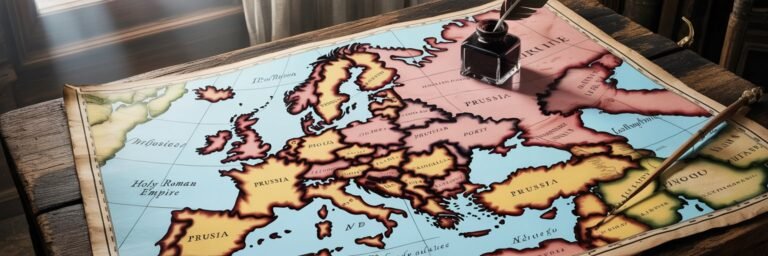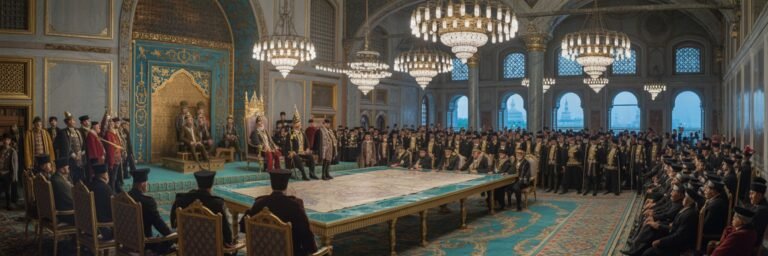INTRODUCTION
As the waters of the Middle Ages receded, the European landscape was reshaped by a remarkable cultural and intellectual revival known as the Renaissance. Coalescing around the 14th century, this period ushered in an era of unprecedented growth that reset societal norms and drastically transformed global politics. The Renaissance touched every stratum of society, from art and architecture to philosophy, science, and politics. It was a seismic shift, a rebirth of sorts, that propelled mankind into modernity and fundamentally altered the course of global politics.
HISTORICAL BACKGROUND
Before we delve into the impact of the Renaissance on global politics, we must understand its roots. The Renaissance, which translates to ‘rebirth’ in French, was a period of great cultural reawakening that marked the transition from the middle ages to modernity. It spanned three centuries, from the 14th to the 17th, and was primarily centered in Italy, particularly in the opulent city-states of Florence, Venice, and Rome.
The era was born out of the ashes of the Middle Ages, a period marked by religious strife, economic instability, and political upheaval. The bubonic plague had decimated Europe’s population, social order was in disarray, and the Church’s authority was waning. However, amidst this chaos, the seeds of the Renaissance were beginning to sprout. The European fascination with antiquity, the spread of literacy, and the emergence of humanism set the stage for this revolutionary shift.
THEORIES AND INTERPRETATIONS
Numerous theories exist regarding the impact of the Renaissance on global politics. Mainstream interpretations argue that the Renaissance democratised political power and birthed the concept of nation-states. The rise of humanism promoted individual thinking and encouraged people to question the status quo, challenging the absolute power of monarchs and the Church. This shift saw the birth of representative institutions, the precursor to modern parliaments.
Nowhere was this more evident than in the city-states of Italy, where citizens had a say in governance, a stark contrast to the feudal societies of the Middle Ages. Moreover, the Renaissance revived the concept of ‘civitas’, the idea that a state should serve its citizens, not the other way around. This gave rise to social contract theory, which underpins modern political thought.
Lesser-known theories suggest that the Renaissance’s political transformations were not uniform across Europe. While Italian city-states embraced republicanism, other regions retained autocratic rule. This dichotomy sowed the seeds of future political conflicts, such as the Thirty Years War.
MYSTERIES AND CONTROVERSIES
The Renaissance wasn’t without its mysteries and controversies. Historians have queried whether the Renaissance was a singular movement or a series of disconnected revivals without a central cause. Furthermore, the “Eurocentric” view of the Renaissance has also been questioned, as similar cultural upsurges were occurring in other parts of the world.
One of the major controversies involves Renaissance humanism’s role in uncoupling politics from religion. Some scholars argue that the Renaissance’s secular focus was an essential precursor to the separation of church and state; others posit that this was more a byproduct of the Reformation and Enlightenment.
SYMBOLISM AND CULTURAL SIGNIFICANCE
The Renaissance, symbolically, was an era of ‘light’ that emerged from the ‘dark’ middle ages, casting away centuries-old traditions and norms. It ignited the spirit of inquiry and celebrated human potential. Politically, it symbolized the movement away from a theocentric world to a human-centric one.
Many iconic art pieces from this era, like Machiavelli’s ‘The Prince’, captured the zeitgeist of this shift, depicting the separation between morality and politics, thereby influencing political practices for centuries to come.
MODERN INVESTIGATIONS
Modern investigations into the Renaissance and its impact on global politics include the exploration of its enduring influence on contemporary political structures. The seeds of human rights, democracy, and secularism, all found their genesis in the political shifts of the Renaissance. Furthermore, the Renaissance’s mercantile systems and corporate structures influenced today’s global economy.
The analysis of correspondence between Renaissance figures, such as that of Lorenzo de’ Medici and Christopher Columbus, sheds light onto how alliances, trade agreements, and diplomacy evolved over time. These studies offer valuable insights into the political interconnectedness of the Renaissance world and its broader influence on global politics.
LEGACY AND CONCLUSION
To this day, the Renaissance’s fingerprints are all over our political map. It changed the face of global politics, pivoted the direction of international relations, and laid the groundwork for modern democracy. It elevated the individual, freeing him from the shackles of divine monarchy and extending a platform for him to partake in the power dynamics of society.
It isn’t a stretch to say that we are still living in the long shadow of the Renaissance. From diplomacy and human rights to the very concept of nation-states, we are constantly navigating the political contours shaped by the Renaissance. Whether we recognize it or not, this remarkable period continues to shape and mold our world in profound ways.
Thus, in the grand tapestry of human history, the Renaissance stands out as a vibrant, transformative epoch that helped set the course of world’s political future. It emerged as a Pandora’s box of radical ideas, set those ideas aflame, and changed the world as we know it. A truly remarkable testament to human resilience, spirit, and our ceaseless desire to innovate and improve.


